Joining Forces: un ctrl's Fusion of Dance, Visuals, and Sound
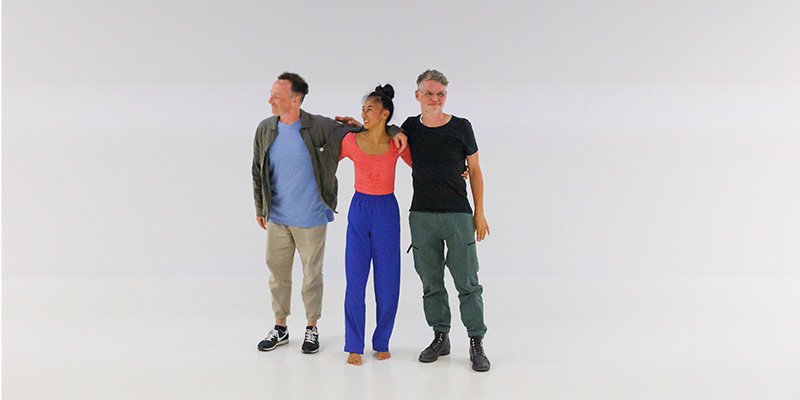
The story behind un ctrl – a trio comprising dancer Cat Jimenez, A/V artist Martin Retschitzegger and music maker Daniel Kohlmeigner – serves as a reminder that innovation flourishes when artists from seemingly different worlds converge. Their collaboration began with a unique invitation: to develop a live performance integrating movement sensors, visuals, music, and dance choreography at the Ars Electronica festival in Linz. On accepting the mission, they embarked on a creative process that shows the potential of interdisciplinary performance to enrich experiences for both creators and audiences alike.
From the trio’s initial brainstorming sessions, a core concept emerged around the idea that technology, despite providing a sense of control, can often yield unexpected outcomes. The performers chose to embrace this uncertainty in an effort to challenge the notion that only perfection is worth showcasing.
The multimedia venue, DeepSpace 8K emerged as the canvas upon which un ctrl would execute their shared vision. This distinctive space envelops visitors in fully immersive experiences, thanks to its high-resolution projection capabilities that extend seamlessly across the walls and floor.
“The multimedia room setting was almost like a fourth actor in the whole piece”, explains Kohlmeigner. “So we designed a performance, especially for this space.”
Highlights from un ctrl’s performance at Ars Electronica, 2022
An experienced electronic musician and educator, Daniel Kohlmeigner is known for his work as one-half of the duo Ogris Debris. As the appointed music-maker for un ctrl, he envisioned a truly interactive experience, aiming for something beyond the ordinary. His ideas involved a dynamic scenario where the dancer, Cat Jimenez, could manipulate the music and sound in real-time using SOMI-1 wearable MIDI controllers. Keen on avoiding clichés however, Kohlmeigner sought to move away from tried and tested formulas like controlling filter cutoffs, “because we've all seen that before”, he notes.
“Cat was sending control change parameters via MIDI while triggering notes”, he explains. “She could influence the pitch of the notes with the velocity, speed or angle of a certain movement. She could also change the note length just by the speed of a movement. And then I was the one who could influence the mood, going from a major to a minor scale.”
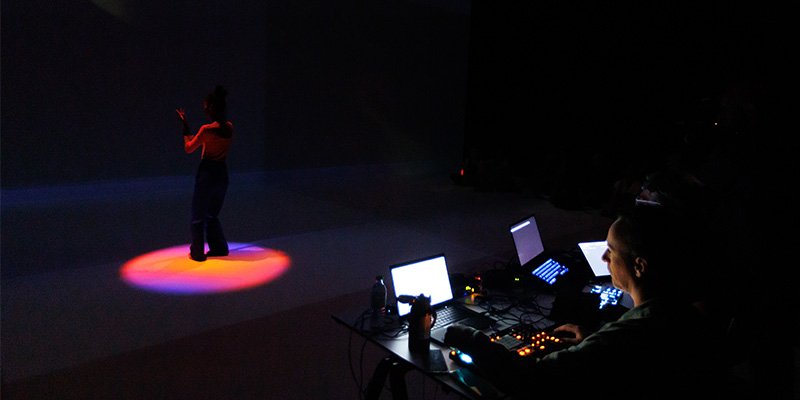
Daniel Kohlmeigner uses control change parameters received via MIDI to create real-time, generative music in Live
As Creative Director and co-Founder of the Berlin-based Studio m box, Martin Retschitzegger has over 20 years of experience working in the fields of moving image and immersive and spatial media experiences. In the same spirit of interactivity, he designed a real-time generative visual spectacle to augment un ctrl’s performance. Behind the scenes, multiple signal inputs were at play, shaping the visual experience. The process wasn't just a singular effort; it involved the collaboration of all three performers. The wearable controllers enabled Jimenez to transmit her movements to Kohlmeigner and Retschitzegger simultaneously via MIDI. This seamless data exchange allowed them to weave together a cohesive, real-time audio-visual narrative.
“For the visual performance, we built custom software within the VVVV programming environment”, explains Retschitzegger. We created a lot of features for the show that were not super finished. We used audio inputs and signals from the SOMI-1s to control various parameters within the software. And then there was some manual control on top. There were no premade linear sequences.”
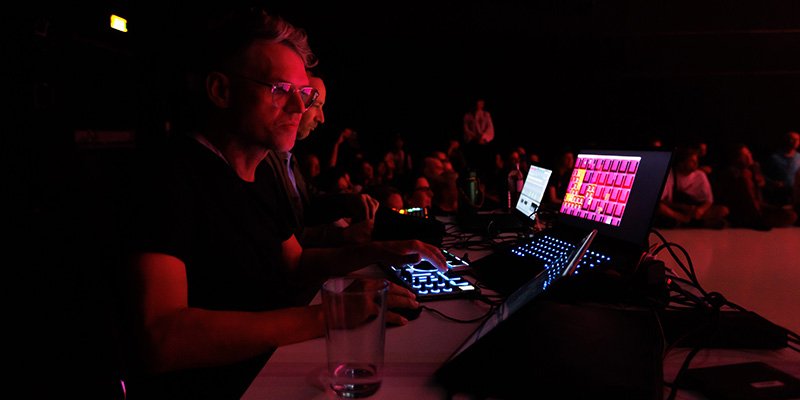
Behind the scenes, Martin Retschitzegger creates generative visual projections in the DeepSpace 8K room
For Retschitzegger, the challenge lay not just in the creative and technical process but in adapting to the physical space itself. “If you work in a room with multiple projections and you put too much content in there, you can always lose the magic because it gets so intense”, he says. “So we only used the floor in some parts, with just small moments of intensity. There was never too much light in the room”.
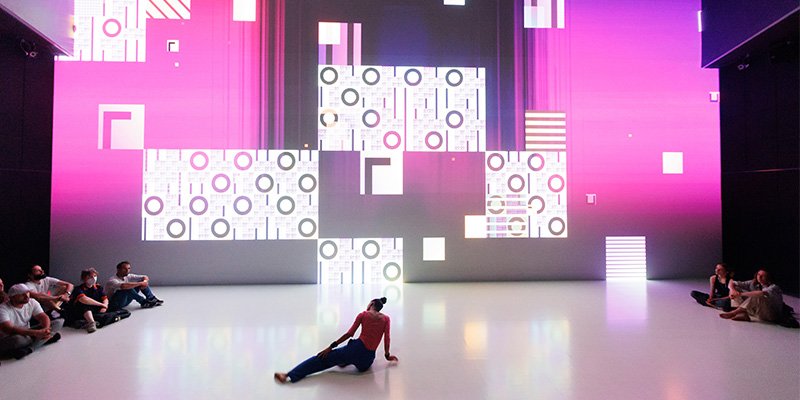
Retschitzegger’s carefully curated visual projections light up the DeepSpace 8K room
For the music, Kohlmeigner's initial creative vision was at first driven by an inclination towards traditional techno-oriented rhythms. Drawing inspiration from his connection with Retschitzegger, a fellow techno artist, they envisioned a pulsating sonic landscape characterized by hard-hitting beats and fast-paced kick drums. However, a subtle shift occurred as they sought a balance, introducing sparser elements to temper the intensity. Kohlmeigner notes that despite this change of direction, their exploration still “retained its techno essence”, albeit in more of an experimental guise.
“I think one of the most radical things that you can work with in sound is silence.”
Using Instrument Racks and Macros in Ableton Live, Kohlmeigner devised a system that enabled generative music to be triggered by Jimenez's intentional movements. With her actions, MIDI notes mapped to the Macro Randomization button in Kohlmeigner’s Instrument Racks altered not just sound parameters but entire sequences, notes, rhythms, samples, and effects.
Download Daniel Kohlmeigner’s Instrument Rack*
*Requires a Live 11 Suite license or the free trial
“Cat could make one move and the whole music would change”, Kohlmeigner remembers. “It wasn’t even technically possible to recreate one of these transformations, because dozens of parameters were being randomized. Sometimes it would sound pretty cool and sometimes it was way too much. But Cat could decide what we would work with by hitting the floor another time, just to see what the computer came up with. For me, this was the core idea for the whole performance.”
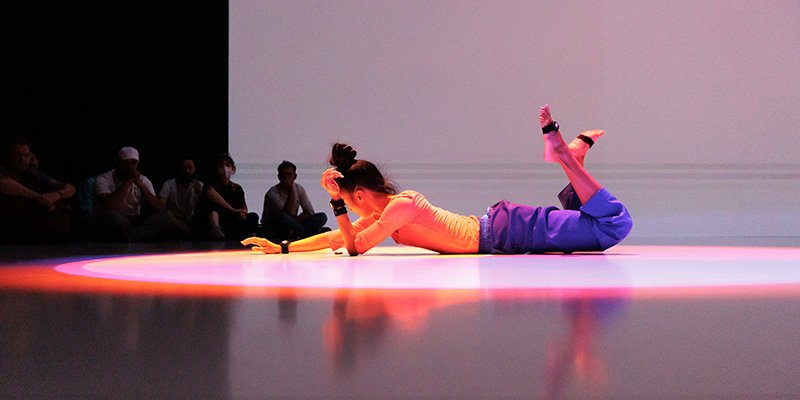
Wearable MIDI controllers allow Cat Jimenez to trigger Macro Variations in Live by striking the floor
“The generated material was at times overwhelming”, Jimenez adds. “I was wondering what to do with it all. Maybe in that sense, it represented overconsumption, globalism, and too many options. So during the performance, I would think OK, just smash on the floor, smash it again, and again, and then cause a crisis, cause chaos, and then a shutdown.”
Running with this idea, the performers incorporated a simulated system crash into their act. This unexpected curveball left the audience confused as Jimenez harnessed feelings of genuine overwhelmedness to fuel her artistic expression. Frantically circling the space, breathless, she commanded the audience to take their seats swiftly. Tension in the room hung thick as uncertainty loomed: was this a calculated part of the act, or had impatience really overtaken the performer?
“People were not sure what was going on”, remembers Kohlmeigner. “We simulated a blackout. It was dark, there was no sound. It took a while until people realized this would lead back to the performance.”
“I was cursing as if everything had gone to shit” Jimenez adds. “I was improvising on a crisis. Then I asked the audience if they could help me by giving me some light because I needed to find my way back in.”
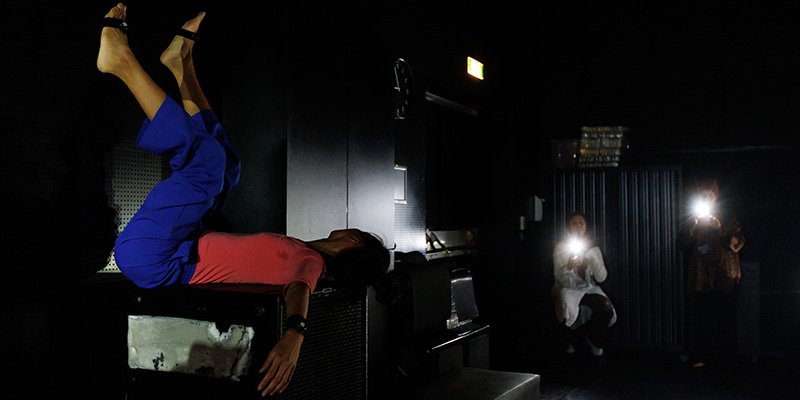
Jimenez improvises on a simulated system crash, creating tension and confusion in the room
For her part, Jiminez went through a rigorous phase of research into her own physicality in order to prepare raw material for performance. “I think this piece unfolded itself because it gave so many possibilities”, she recalls. “But I also think a very important aspect was my ability to erase all the unnecessary noise. Because while we had endless creative options with the technology, it was important to focus on the most subtle or minimal principle that we could play with.”
Kohlmeigner adds further context, noting Jimenez’s knack for isolating specific elements from his music.
“I realized, it was better to focus on just one certain aspect, so Cat would only have to deal with controlling one sound at a time. My original idea for this whole set was full of music. I imagined Cat would trigger chords within a full set of music. But then she showed us her idea of working with just one element against a backdrop of silence and I realized that that was so much cooler. I think one of the most radical things that you can work with in sound is silence.”
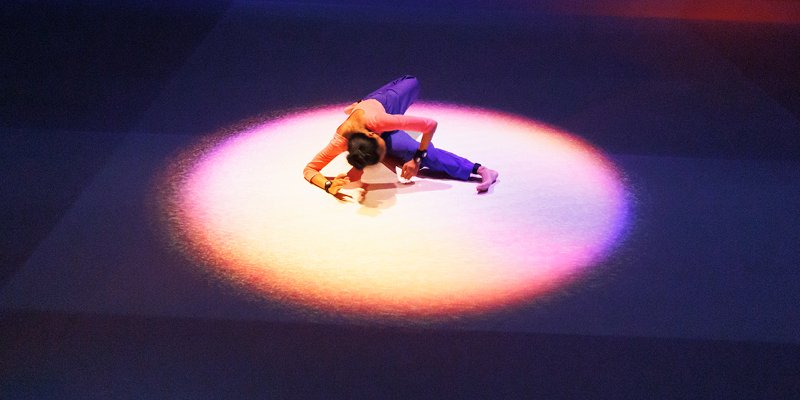
Under the spotlight, Jimenez seamlessly blends dance and choreography with real-time MIDI control gestures
In his search for other innovative ways to control sound, Kohlmeigner collaborated with a friend on a Max for Live device which would allow Jimenez to scrub audio samples with movement. A key aspect of this device was its responsiveness to the speed of movement, translating slow gestures into deep frequencies and rapid motions into higher frequencies.
“I was really surprised I couldn't find a device like that already”, Kohlmeigner recalls. “I thought, how is it possible that no one ever did that? Although I'm an Ableton Certified Trainer, creating devices like that from scratch isn’t something I do often. It would have cost me way too much time. But I found a really old thread on maxforlive.com, where someone posted part of a code that was unfinished. I almost managed to get it to work and then my friend helped me build on it.”
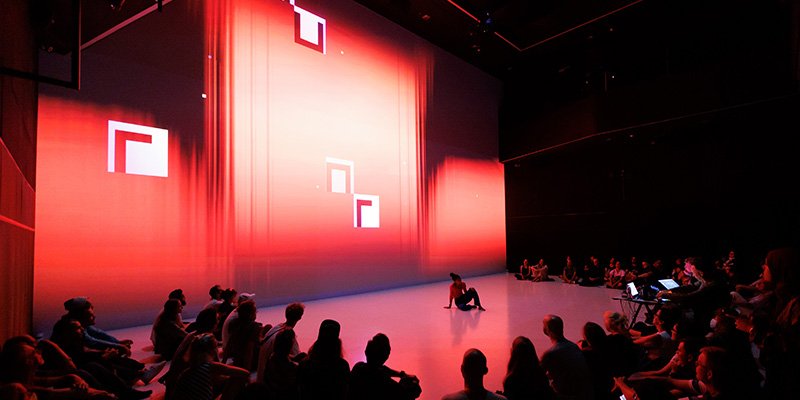
un ctrl’s audience sits immersed in dance, visuals, and sound
With time constraints and the intricacies of the specialized DeepSpace 8K room, un ctrl encountered inevitable hurdles throughout the development of their show. However, the trio’s ability to navigate difficulties with grace and spontaneity is a reminder that a successful performance lies not in the absence of challenges, but in the creative ways we work with them.
“A lot of energy was put into this piece”, concludes Kohlmeigner. It wasn’t the easiest thing to make, but I think we had fantastic feedback. I hope that there will be an un ctrl continuation in some form in the future.”
Keep up with Daniel Kohlmeigner, Martin Retschitzegger and Cat Jimenez
Text and interview by Joseph Joyce
Photography by Tom Mesic